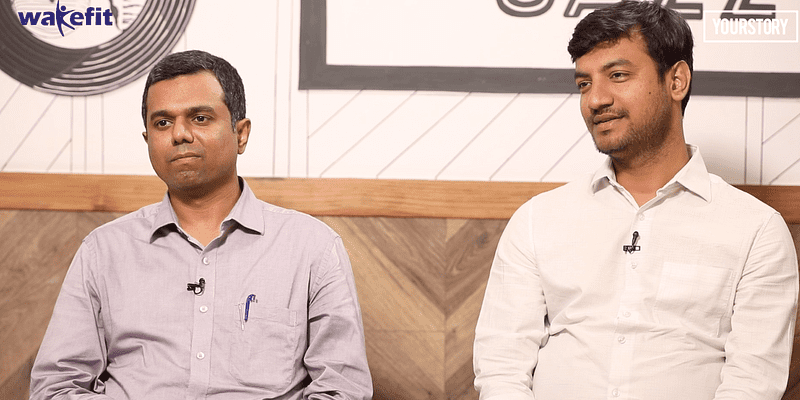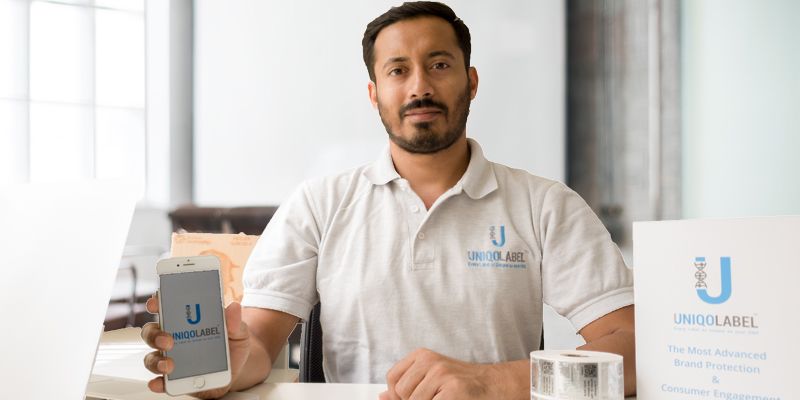Buying a fake product may not be new to consumers. But that it is a multibillion-dollar industry may be news to some. Counterfeiters know that consumers yearn to associate with a brand, which allows them to take advantage. By embossing the name of a popular brand on a counterfeit product, they are able to dupe, satisfy and profit to build a parallel economy.
A report issued by the International Chamber of Commerce has predicted that the global economic value of counterfeiting and piracy could reach $2.3 trillion by 2022. It states that most of this money, apart from being a personal gain for black marketeers, goes to terrorists and groups that fund criminal activities on a global scale.
Why does this number matter in India?
The Indian retail market is expected to reach $1-1.3 trillion by 2025, according to consulting company BCG. Consulting and i-banking firm Avendus’s report on Indian D2C brands predicts that direct-to-consumer (D2C) brands will present a $100 billion market opportunity in the same period. It adds that there are already 600 such brands in India, and many more are on their way to starting up.
According to Acviss, a technology company that uses algorithms to protect consumers and brands from experiencing counterfeit products, the counterfeit industry is easily a Rs 20,000 crore (around $2.7 billion) industry, or roughly less than 0.37 percent of the total retail pie in India. However,this figure is still a damaging outcome for brands.

Wakefit founders
The good news is that new-age brands are already setting aside a portion of their income as legal fees to fight counterfeits, fakes, and imitations. One may think that it is a small portion of the retail universe, but, Acviss data suggests that in certain categories — such as B2B and B2C (including apparel, pharmaceutical and electronics products) —counterfeits can be as high as 20 percent of the market opportunity depending on the categories.
The war has just begun
Recently, Bengaluru-based mattress and sleep-tech brand Wakefit took a Bhiwani-based company to court for counterfeiting.
Wakefit alleged that the brand has the same look as that of a Wakefit mattress, and consumers have been pushed to buy this counterfeit product. According to the brand, it offers no experience or guarantee of the product.
"We encounter three types of problems — fake, copycat, and imitations. A fake product is one where the product is wrongly termed as a Wakefit product, but it is not. A copycat product, on the other hand, is something that would have a similar logo, website, phone number, and colours to say it is similar to Wakefit. A product in Haryana is a copy of ours, and customers who have bought that product do not have guarantees on its efficacy. We have sent the company two legal notices. The third problem is imitation — people go to an ecommerce site and say they are selling Wakefit, and we find that they are selling a mattress with a Wakefit label. This is a clear case of cheating, and in many cases, we have to report trademark infringement," says Chaitanya Ramalingegowda, Co-founder of Wakefit.
Many D2C brands are opting for emblazoned bar codes, RFID tags, and holographic labels that work only when the consumer scans it from the app of the ecommerce site. But still, the war against these fake products is not going away soon.

Fake products result in billions of dollars of loss to the economy
Electronics brand boAt, which recorded a revenue of Rs 650 crore, will tell you that there are many unauthorised retail outlets using its name and brand, selling fake electronic products.
Then there are brands taking advantage of boAt's marketing, and launching names similar to it.
"It is a menace. Our team actively tracks these because our products are blatantly copied too. If people find a fake product, they let us know through our website, and we track that lead. Unfortunately, some people think it's a real boAt product. We have to fight the fakes by replacing them for some of our customers, and they become our evangelists. We track these products through the serial numbers reported," says Damandeep Singh Soni, VP of Growth at boAt.
He adds that while IP laws are strict, and implementation is much better than earlier, brands still need to be further protected by state-level institutions.
Brands and the law
PallabiKalita Dey, lawyer and partner at trademark and patent consulting firm IPRinn, maintains that products are sometimes copied unintentionally. If there is a similarity between two brands’ logos or names, chances are that a D2C brand has unwittingly copied another.
“When a D2C brand is starting out, it has to search and get details of the trademarks already filed and registered by businesses of similar nature. There are 45 classes of trademarks; a brand has to identify its relevant class, and check whether its name and logo can be protected,” she says.
For larger D2C brands that have been operating since before trademarking and copyrighting became mainstream, goodwill and common law rights come into play.
Pallabi says, “Some established brands have been retailing products for well over 10 to 15 years, and have built up goodwill. A new brand cannot use the name or logo of a product by an established brand even if there is no trademark filed.”
Common law, which refers to a body of unwritten laws based on legal precedents established by courts, can be leveraged by a brand whose products have been copied. Passing off, which is a common law tort, can be used to enforce unregistered trademark rights. This prevents a new brand or a seller of fake products from misrepresenting his/her goods or services as that of another.
New D2C brands in the market like Wow Skin Science, Mamaearth, MyGlamm, and Lifelong have made hundreds of crores in a matter of a few years, and have become household names. However, older and well-established brands are also looking to employ a D2C model and sell online. Their brand reputation is at greater risk if their products are copied and sold.
Pune-based Shoptimize, which built ecommerce platforms for Haldiram’s, Luminous, and Whirlpool, says that copies are aplenty in fashion and lifestyle sectors. CEO Mangesh Panditrao says, “The issue is also rampant in the footwear industry, and especially if a brand does not take full control of their operations,” he says.
He adds that lower prices, in marketplaces, can only mean one thing in several cases "they are not original products".
Mangesh recommends consumers to buy products directly from a brand’s website. He believes this is the best way a consumer can ensure the authenticity of the products being purchased.
Shadowfax,an ecommerce logistics company, believes that in 2020 alone, the size of the counterfeit industry in ecommerce can be Rs 500 crore in size.
"It is an issue we notice in marketplaces, as it is a fast-growing industry. We work with marketplaces to manage reverse logistics when it comes to consumers returning such products," says Abhishek Bansal, Co-founder of Shadowfax.
Yashas Alur, who founded D2C handbag brand Everpret, is primarily selling through the brand’s website. Everpret also uses Facebook, Instagram, and Google to drive traffic to its website. But this has not saved it from encountering look-alike bags sold outside of India.
“I have seen fake handbags that look like ours sold on portals in other countries, but not so much in India. There’s not much we can do about this. Our moat is the brand we have, which adds credibility to our products,” says Yashas.
Funnily though, copied and unoriginal products are not always a result of a malicious intention to plagiarise a design or product. In the last few years, ecommerce marketplaces Amazon and Flipkart have built a reputation for welcoming new brands with open arms.
This is despite the presence of zero-tolerance, anti-counterfeiting policies which prohibit the sale of products that are illegally replicated, reproduced, or manufactured.
"Our customers expect that when they make a purchase through Amazon’s store—either directly from Amazon or from one of its millions of third-party sellers—they will receive authentic products," said a spokesperson from Amazon in an email sent to Your Story.
They said that Amazon works with and empowers brands through programmes like brand registry, transparency, and ‘Project Zero’ to ensure that only authentic products are sold online.The company investigates any claim of counterfeit thoroughly, including removing the item, permanently removing the bad actor, pursuing legal action or working with law enforcement as and when appropriate.
In order to detect bad actors and potential counterfeit products, Amazon hasmade investments in machine learning and automated systems. It has employed dedicated teams of software engineers, applied scientists, programme managers, and investigators to operate, and continually refine anti-counterfeiting programmes.
Amazon’s systems automatically and continuously scan numerous data points related to selling partners, products, brands, and offers to detect activity that may indicate a potentially counterfeit product and immediately block or remove it from our store, writes the spokesperson.
"These days, Amazon is reportedly refusing to onboard sellers who don’t have a registered trademark for their products. Ecommerce platforms are now checking if D2C brands and sellers have applied for a trademark or already have it. Receiving a trademark can take a couple of months or even a year, but it is becoming necessary to sell on Amazon,” says Pallabi.

BoAT Co-founder Aman Gupta
Amazon’s automated protections proactively and continuously scan more than five billion daily product listing updates globally to look for suspicious listings. Since its launch in India in 2019, Project Zero’s automated protections have stopped millions of suspicious listings for brands enrolled in Project Zero — all before a customer ever saw them.
“These automated protections are powered by Amazon’s machine learning and are continuously fed new information, so we continueto get better in preventing and blocking potential counterfeit listings,” writes the company’s spokesperson.
"Brands should create strong processes to track counterfeits. They have to work with government bodies to protect consumers from fake brands. Today's consumers are smart, and hence brands should strengthen customer service to proactively track data. The other thing is D2C brands can use technology to track and protect their products," says Neeraj Shrimali, Executive Director, Digital and Technology at Avendus.
This is an international problem that needs to be curtailed.
In the US alone, according to Homeland Security, the number of IPR related seizures are worth $1.2 to $1.5 billion each year. This is just a tiny speck in the entire ocean of fake, imitation and counterfeit products.
Farmers are affected too
Fake products are not just limited to consumers in cities. Even our farmers are subject to it,more so because fake products are easily distributed in the hinterland.
Acviss Technologies is working with Corteva Agri Sciences to ensure that farmers get the right insecticides and not counterfeits. Here, the retailers who work with the farmers have a Corteva app which allows them to scan the packaging for details about its origin and packaging date.
"We encode the barcode and our scanners verify the product. We have ensured it is tamper-proof, and if the sticker is pulled out of the packet and stuck on a new pack, the scanner will identify it as a fake product” says Vikas Jain, Co-founder of Acviss Technologies.
Even plywood major Kitply uses Acviss. The company wants to fight counterfeits as people end up buying products that have too much formaldehyde, which is injurious to health. Kitply uses tamper-proof technology in the form of hologram labels that work with computer vision algorithms to ensure that retailers and consumers have access to the real product.

Acviss founder, Vikas Jain, whose product Uniqolabel fights counterfeit products with a patented multi-layered security label.
The long-standing tradition of visiting local markets or fake brand sites for deals is something that is ingrained in us. So, whether it is B2B or B2C, counterfeits will be part of our lives.
Unfortunately, for the fledgling D2C business, its battle with the counterfeits industry is well underway. But this also signifies that the D2C industry has truly taken off to become a burgeoning business and will remain so in the years to come.
Edited by Anju Narayanan
Link : https://yourstory.com/2021/01/wake-up-and-smell-the-fake-how-d2c-brands-fight-th
Author :- Vishal Krishna ( )
January 13, 2021 at 05:45AM
YourStory



